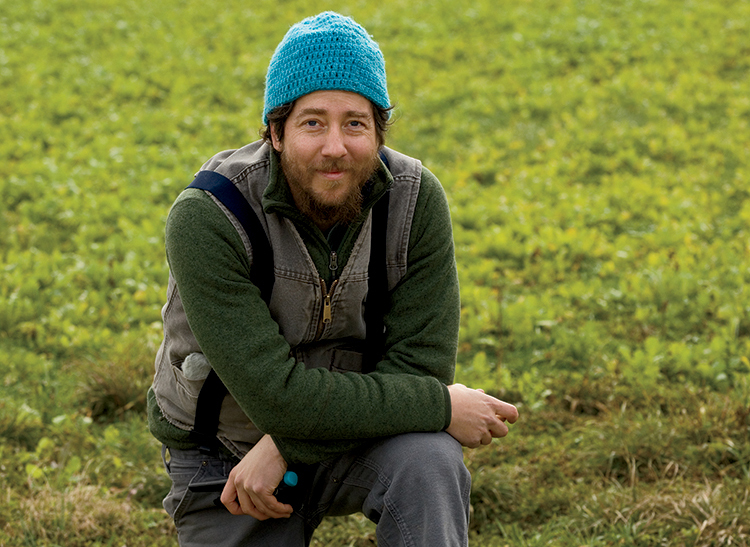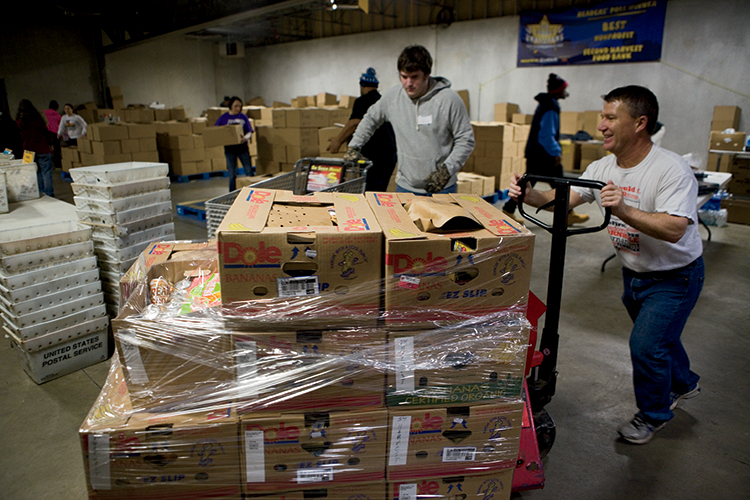Home > Tennessee > Tennessee Farm to Table > Giving Back to Fight Hunger
Giving Back to Fight Hunger
In partnership with: Tennessee Department of Agriculture

It’s a call to action. According to the latest Map the Meal Gap study, released annually by Feeding America, 17.1 percent of Tennesseans are food insecure. This means that at times, they are unable to access enough food to keep them healthy.
Eating three wholesome meals a day is something many of us take for granted. But as the providers of food, farmers understand just how precious this basic need is and many are answering the call to help. That’s why they’re working with organizations across the state to fight food insecurity, including Second Harvest Food Bank of Middle Tennessee, Harvested Here in Chattanooga, the Tennessee Department of Agriculture (TDA) and the U.S. Department of Agriculture (USDA).

Second Harvest
“We’re connecting small farmers with the food assistance programs in their county to provide a quality resource to the community,” says David Cloniger, food resource manager at Second Harvest. “Some farmers are growing crops especially for the food bank, and we’re covering their costs. Others are utilizing our volunteers to help them glean their fields. Some are donating when they can, and others accept a nominal payment from us for their seconds.”
Founded in 1978, Second Harvest is a nonprofit organization whose mission is to feed hungry people and solve hunger issues throughout Middle and West Tennessee, serving 46 counties. Cloniger says that working with farmers helps local food sources thrive and grow to become accessible to those who need them. He adds that TDA has always been extremely supportive, offering time, money and advice to aid in Second Harvest’s mission.
![Agriculture Nonprofits [INFOGRAPHIC]](https://eadn-wc01-4177395.nxedge.io/wp-content/uploads/2020/08/Screen-Shot-2015-03-05-at-2.07.20-PM.png)
While Second Harvest has more victories than challenges, one issue that both farmers and organizations face in gathering food for distribution is spoilage. The world produces enough food to feed 9 billion people per day, so figuring out how to stop wasting half of it is key.
Second Harvest rescues perishable food from 198 grocery stores throughout the service area each week. This is food that would normally be thrown away, but is still edible and perfect for distribution. They also gather more than 7 million pounds of fresh produce each year from farmers and manufacturers. Cloniger says most of this produce has cosmetic defects, but is just as fresh as what ends up in grocery stores. They compost any produce that might spoil before they have a chance to deliver it.

National Focus
While Second Harvest counts on local partnerships with food pantries, soup kitchens and more to help them carry out their mission, the TDA is working on a larger scale with the USDA to administer federal nutrition and hunger programs, including School Food Distribution and the Food Assistance Program (referred to as TEFAP).
“The food distributed in the TEFAP program is 100 percent American grown,” says Terry Minton, commodities administrator at TDA. “Last year, the TEFAP program received close to 17 million pounds of food from farms across the U.S.”
The food program is administered by TDA through partnerships with community action programs and Second Harvest’s network of food banks. Minton says the population in Tennessee is around 6.5 million, and about 17 percent lives in poverty. People with incomes below 150 percent of the federal poverty level can qualify for the TEFAP program.
She says in working with people in need and organizations that help them, she’s developed a strong sense of connection.
“Any person, regardless of their job, can help those who are less fortunate,” Minton says. “Farmers have a great advantage because their job is growing food for people.”
![Agriculture Nonprofits [INFOGRAPHIC]](https://eadn-wc01-4177395.nxedge.io/wp-content/uploads/2020/08/Screen-Shot-2015-03-05-at-2.07.02-PM.png)
Harvested Here
Founded in 2014, the Harvested Here Food Hub in Chattanooga’s mission is to strengthen and secure the future of a healthy regional food supply by giving local farmers a means to connect with the community.
Harvested Here represents more than 20 farmers interested in entering the local grocery market. Locally sourced food means products available to consumers are available at their healthiest state. The food hub can help farmers solve issues ranging from cold storage to transportation.
The food hub will provide low-cost services to farmers by marketing, selling and distributing the farmer’s production. Harvested Here also plans to partner with local food banks, including the Chattanooga Area Food Bank, (CAFB) to increase access to fresh food for those in need. CAFB provides 12.7 million pounds of food annually to 160,000 clients in the region who live below the poverty line.
Ultimately, Harvested Here aims to increase access of local food while building a stronger local food economy, providing a win-win in the fight for hunger and agricultural awareness.
![Agriculture Nonprofits [INFOGRAPHIC]](https://eadn-wc01-4177395.nxedge.io/wp-content/uploads/2020/08/Screen-Shot-2015-03-05-at-2.07.11-PM.png)



